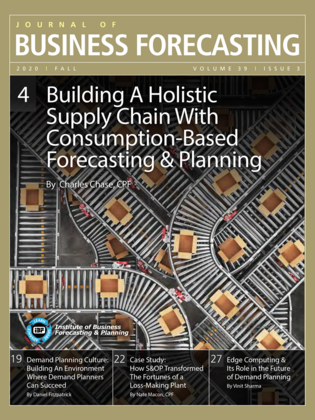Reducing Forecast Bias— The 4 Levers of Bias-Resistant Demand Planning
Persistent forecast bias issues are unproductive and frustrating to those involved inthe demand planning process. Such issues are evidenced through excessive optimism and unreasonable overrides madeto otherwise realistic and fact-based projections. What makes forecast bias issues difficult to fix is that there is usually abehavioral root cause associated with them. Considering this challenge, planning process practitioners can support theirorganizations by designing and deploying mechanics that encourage and make the “right” behaviors easier to perform. Inthis article we outline four levers that achieve this end: Use of Multiple Views, Opportunity for Collaboration, AssumptionOrientation, and Incorporation of Closed Loop. Once these levers are employed, we can expect forecast bias to decrease, andforecast accuracy ...
From Issue:
Building a Holistic Supply Chain with Consumption-Based Forecasting & Planning
(Fall 2020)









